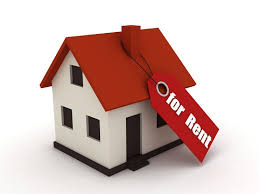The
Grand Palace
Attraction
Details :
In the past, the Grand Palace was the residence of the
kings. King Rama I had it constructed during the establishment of Rattanakosin
Kingdom. At first, there were only Phra Maha Prasat, Phra Maha Monthien, and
Wat Phra Si Rattana Satsadaram (Temple of the Emerald Buddha), which is located
inside the palace area like Wat Phra Sri Sanphet. Later, in the reign of King
Rama IV and King Rama V, western culture had a big impact on Thai society,
resulting in the mixture of western architectures in this place. At
present, the Grand Palace is separated into two areas; the Temple of Emerald
Buddha and the Court—the king’s residence and working place. Inside the Court,
it is also divided into the Outer Court, the Middle Court, and the Inner Court.
Among the group of throne halls, the most important throne is Phra Thinang
Dusit Maha Prasat, formerly called Phra Thinang Intra Pisek Maha Prasat. It is
the first throne in the palace and is a place housing the bodies of the former
kings, queens, and their family. Many important royal ceremonies, including
auspicious ceremonies and charitable ceremonies, are also held here. Another
throne hall is Phra Thinang Aphorn Phimok Prasat where the king’s vehicles are
kept. This is also where the king performs the ceremony of changing his
regalia, together with the procession. The other throne hall is Phra Thinang
Phiman Rattaya, constructed in 1789 during the reign of King Rama VI. The king
used this place as a residence and a meeting hall for his family members and
his courtiers to be awarded with regalia and State orders and decorations. It
is also a place where the bodies of the members of royal family are cleaned
before housing the cinerary urns in Phra Thinang Dusit Maha Prasat. As for Phra
Thinang Chakri Maha Prasat, it was built in 1876 during the reign of King Rama
V. It was used for welcoming foreign dignitaries and heads of state. There are
many more throne halls in this area; for example, Phra Thinang Rachakaranya
Sapha, Phra Thinang Moon Satharn Borom Ard, Phra Thinang Borom Ratchasathit
Mahoran, Phra Thinang Chakraphat Phiman, and Phra Thinang Phaisan Thaksin.
Moreover, the northeast part of the Grand Palace houses Wat Phra Si Rattana
Satsadaram or Wat Phra Kaew. The monastery is used for performing important
religious ceremony. It was built in 1784 and was restored in every reign of the
kings in Chakri dynasty. The chapel and the cloister display variety of
spectacular mural paintings. This place enshrines not only Phra Phuttha Maha
Mani Rattana Patimakon (the Emerald Buddha), Thailand’s respectable Buddha
image, but also other beautiful objects with long history, such as Phra Prang
Paed Ong (the eight colored Prangs), Phra Sri Rattana Chedi (the main stupa),
miniature replica of Angkor Wat, and Prasat Phra Thep Bidon (Royal Pantheon).
Finally, there is also the pavilion of regalia, royal decorations and coins. It
is located on the right side before the entrance of the Inner court in the
Grand Palace. There is the exhibition of coins and money used in Thailand, as
well as regalia and royal decorations of the inner courtiers. The Grand Palace
is open daily from 8.30 a.m. to 15.30 p.m.
Operating day: Daily
Operating time: 08.30 a.m. – 15.30 p.m.
Contact Details : Na Phra Lan Road, Phra Borom Maha Ratchawang,
Phra Nakhon, Bangkok
Tel. +66 2623 5500 ext.3100, +66 2224 3273
Sourse :http://thai.tourismthailand.org/see-do-thip/attraction-detail?cat_id=21&attraction_id=52













